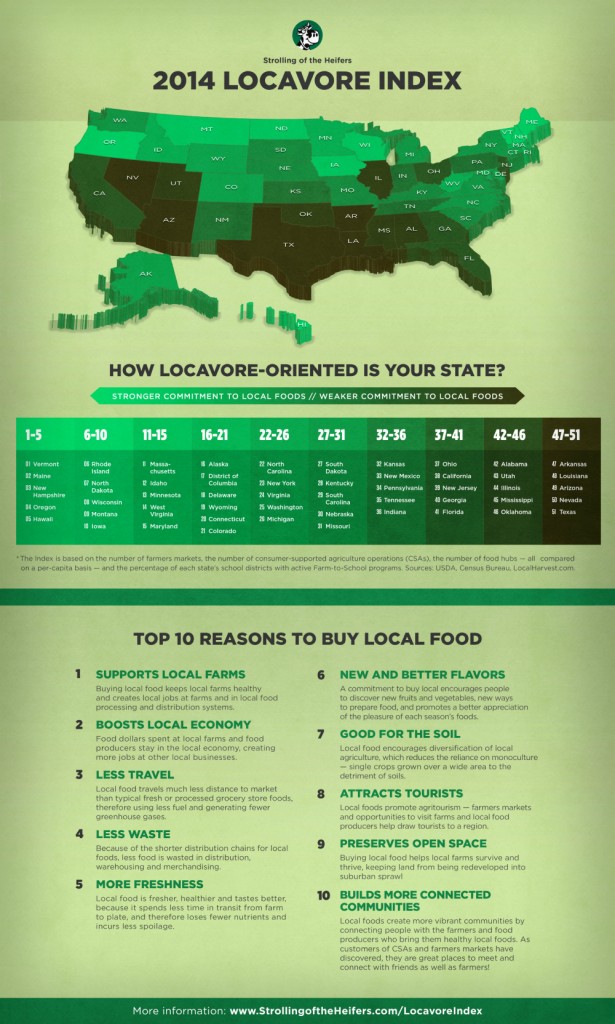It is estimated that the average American meal travels about 1,500 miles to get from farm to plate. Our dependency on far away food sources leaves a region vulnerable to supply disruptions, and removes any real accountability of producer to consumer. As well, nutritional value can quickly decline as time passes after harvest. Finding local food sources can circumvent this impending issue and, because locally-grown produce is freshest, it is more nutritionally complete.
Search for locally grown food near you
On a personal note, I have always had a wonderful experience at farmers markets. I’m always curious how the farmers have grown their food and often ask vendors this question. The vendors are more than willing to give you information about their growing process and how the product was grown. And, because they want you to be a long-term customer, they will often make deals with you and sometime throw in additional products. As well, many provide samples to taste their newest fresh grown edibles. But knowing you are helping your community thrive is the best feeling in the world. Read more about the benefits of buying locally.
For the last ten years, the number of farmers markets have more than doubled. Although buying from local farmers markets has taken off, not all states share the same enthusiasm. Strolling with the Heifers has put out a very informative graphic on how the states compare in the growing interest in locally produced food.


Seems odd that states like Vermont and Maine are at the top of the good list when they have a whopping growing season of what? Three months?
Well, unless you like harvesting and eating ice and snow.
But in Texas, where people grow two gardens a year, often with cabbage, broccoli, peas and squash growing right beside their banana tree, is at the bottom? C’MON MAN!
If you drive 5 or 10 miles to get locally grown food, you are more kind to the environment if you go to your neighborhood supermarket. Total emissions and energy cost per pound is less.